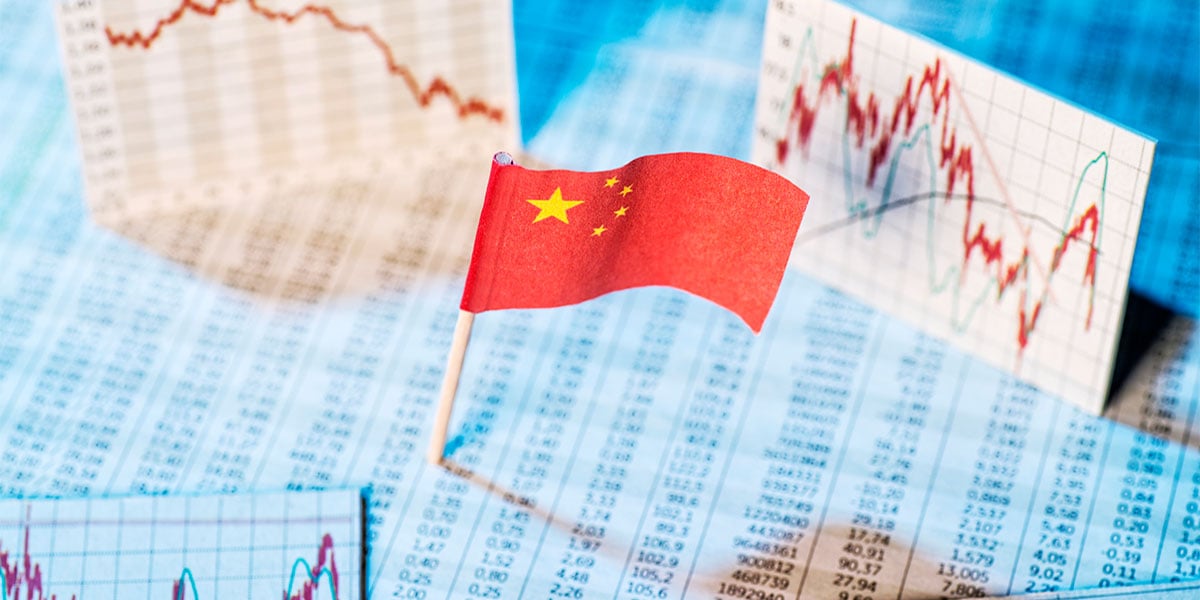Download the PDF

In last week’s Brief (The never-ending strength of the US economy), we examined the surprising resilience of the US economy. In this week’s Brief, we turn to China and examine the consequences of the surprising weakness of the world’s second largest economy.
Question 1. Where is the Chinese economy at?
It’s fair to say that the economy is weak and deteriorating. Across the various sectors of the economy, the data are softening. Of course, the biggest risk factor is the property market, and here, the most recent data for July show that property sales and property starts are plumbing new depths. The property market weakness has been spilling over to the household sector, which holds around three-quarters of its wealth in property, and retail spending has slowed to just 2.5%; a recessionary rate of growth for China. Despite this, the authorities have been reluctant to roll out their usual playbook of providing support to the property market and infrastructure spending so investment spending has slowed. And as if that were not enough, as global trade slows, China exports are taking a hit.
Question 2. As you say, the traditional China playbook to head off slowing growth has been to roll out significant fiscal stimulus. But this tactic has led to the Chinese economy building a large level of debt. How indebted is China in comparison with other countries?
That’s a tricky question in the case of China because its debt data are somewhat obscure to say the least. According to Bank of International Settlements data, its total debt is approaching an eyewatering 300% of its GDP. But China is not alone in carrying a significant level of debt. For example, the US, euro area, and UK have debt ratios of around 250% of GDP, and here in Australia, we’re a little better off, but still with a ratio of around 225% of GDP. However, Japan holds the dubious honour for sheer size of debt, which has a debt ratio of around 400% of GDP. While China’s debt ratio is not yet at the stratospheric level of Japan, it’s been increasing rapidly over the Covid period.
Question 3. How much of a risk to its long run growth prospects is China’s debt problem? Could China end up in a situation with lost decades of growth like Japan?
The analogy with Japan is apt. Property speculation and over investment in property played a large role in the malaise in which Japan found itself at the end of the 1980s. The disorderly collapse in the Japanese property market killed off the consumer, whose wealth was overwhelmingly held in property, and also the corporate sector, which had leaned into the property development that had been heavily debt funded. Leading into their property bubble Japanese corporate debt had increased dramatically from under 100% of GDP at the start of the 1980s to almost 150% at the end of the 1990s at the height of the bubble. So, when the Japanese property prices collapsed, Japanese businesses and the household sector were heavily exposed. Japanese authorities attempted to stimulate their way out of recession to no avail and government debt increased from a modest 65% of GDP in 1990 to 200% of GDP by 2010, with debt now a whopping 230% of GDP.
Question 4. So, how does the composition of Chinese debt look today, compared to Japan’s just before their property crisis back in 1991?
Eerily similar. Chinese corporate debt has climbed from just under 90% of GDP just before the GFC to about 130% of GDP currently. Household debt has also climbed sharply from about 20% of GDP to around 60% and government debt has risen from a modest 35% to 70% of GDP. If Chinese authorities allow a disorderly collapse of the property market, with the economy so exposed to the sector, they may find, just like Japan, that any amount of fiscal stimulus does little to arrest the slide in the economy. They could find their debt burden accelerate to Japan’s level of 400% of GDP and then having to spend more than a decade trying to unwind the debt overhang. Hence, the Chinese authorities are trying to unwind the property overhang in an orderly manner. No standard playbook of large fiscal stimulus, and in consequence, a reduced economic growth rate, but not a deep recession and not a lost decade of growth a la Japan.
Question 5. How will the unwind of China’s property and debt problems impact the Australia economy?
Given our exposure to China as a trading partner, a disorderly collapse of the Chinese property market would be disastrous for our economy. We absolutely need China to solve its property market problems in an orderly fashion. This will mean that China economic growth will be lower than it may well have been had the problem been addressed earlier. Chinese authorities have been progressively ratcheting down their growth targets from 8% a decade ago to 5% currently, as the population has aged and as the Chinese have been attempting to move away from investment and export-led growth. As Chinese authorities factor in the need to address the property market and debt overhangs, we expect further downgrades in the Chinese government’s growth target. This will heighten the imperative on the Australian economy to transition to sources other than traditional resource exports and to destinations for those exports other than China.

